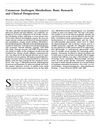 233 citations
,
November 2002 in “The journal of investigative dermatology/Journal of investigative dermatology”
233 citations
,
November 2002 in “The journal of investigative dermatology/Journal of investigative dermatology” Creating stronger blockers for skin enzymes might lead to better treatment for conditions like acne and excessive hair growth.
15 citations
,
May 2002 in “PubMed” The document discussed androgenetic alopecia (AGA), the most common form of hair loss in men and women, characterized by a pattern of hair loss in genetically predisposed individuals. It was identified as a dihydrotestosterone (DHT)-dependent process involving the miniaturization of hair follicles. Although the genetic factors were unknown, the hormonal effects on hair growth were better understood, with local androgen metabolism playing a crucial role. The dermal papilla was highlighted for its role in regulating hair follicle growth through steroidogenic isoenzymes, which could explain differences in androgen sensitivity. These enzymes were considered potential targets for treating AGA or hirsutism.
61 citations
,
December 2001 in “Journal of Investigative Dermatology” 31 citations
,
August 2001 in “PubMed” The document discussed androgenetic alopecia (AGA), the most common form of hair loss in genetically predisposed men and women, characterized by a specific pattern. While the exact genes involved were unknown, the hormonal effects on hair growth were better understood. Human hair follicles were identified as targets for androgens and exhibited active androgen metabolism, capable of converting several androgens through various steroidogenic enzymes. The dermal papilla of hair follicles showed significant activity of type 2 5a-reductase, 3b-HSD, and steroid sulfatase. The document reviewed current knowledge on androgen metabolism in hair follicles and its potential implications for future therapeutic strategies.
21 citations
,
August 2001 in “PubMed” The document discussed the role of steroidogenic enzymes in the skin, particularly focusing on the conversion of testosterone to dihydrotestosterone (DHT) by 5a-reductase enzymes, which is linked to androgenetic alopecia. DHT binds more strongly to androgen receptors than testosterone, contributing to hair loss. The study highlighted the development of finasteride, a 5a-reductase inhibitor, which was effective in promoting hair growth by reducing DHT levels in the scalp and plasma. Additionally, it noted that other enzymes could also contribute to DHT production in the scalp, potentially accelerating hair loss in genetically predisposed individuals.
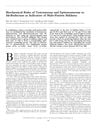 47 citations
,
January 2001 in “Journal of Investigative Dermatology”
47 citations
,
January 2001 in “Journal of Investigative Dermatology” High testosterone to epitestosterone ratio in hair could predict male-pattern baldness.
28 citations
,
June 2000 in “PubMed” Androgenetic alopecia (AGA) was identified as the most common form of hair loss in both men and women, characterized by a specific pattern in genetically predisposed individuals. The genetic basis was not fully understood, but evidence suggested a polygenic rather than a simple Mendelian trait. AGA was defined as a dihydrotestosterone (DHT)-dependent process, involving the miniaturization of hair follicles. The molecular mechanisms distinguishing androgen-dependent beard growth from hair loss in AGA were unclear. However, advances in research highlighted the role of steroidogenic isoenzymes, particularly type 2 5α-reductase in the dermal papilla, which facilitated the conversion of testosterone to DHT, playing a central role in the pathogenesis of AGA.
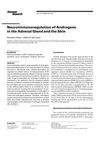 48 citations
,
January 2000 in “Hormone Research in Paediatrics”
48 citations
,
January 2000 in “Hormone Research in Paediatrics” Cytokines and neuropeptides are key in controlling androgen levels, affecting skin and hair conditions.
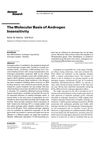 25 citations
,
January 2000 in “Hormone Research in Paediatrics”
25 citations
,
January 2000 in “Hormone Research in Paediatrics” Mutations in the androgen receptor gene cause Androgen Insensitivity Syndrome, affecting sexual development.
 100 citations
,
September 1999 in “British Journal of Dermatology”
100 citations
,
September 1999 in “British Journal of Dermatology” The study found that two enzymes linked to hair loss are located in different parts of the scalp, supporting a common treatment's effectiveness.
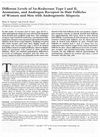 416 citations
,
September 1997 in “Journal of Investigative Dermatology”
416 citations
,
September 1997 in “Journal of Investigative Dermatology” People with hair loss have more androgen receptors and enzymes in certain follicles, with men and women showing different patterns.
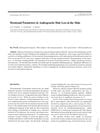 21 citations
,
January 1991 in “Dermatology”
21 citations
,
January 1991 in “Dermatology” Men with male pattern hair loss have different levels of certain hormones compared to men without hair loss.
203 citations
,
November 1984 in “Journal of the American Academy of Dermatology”






